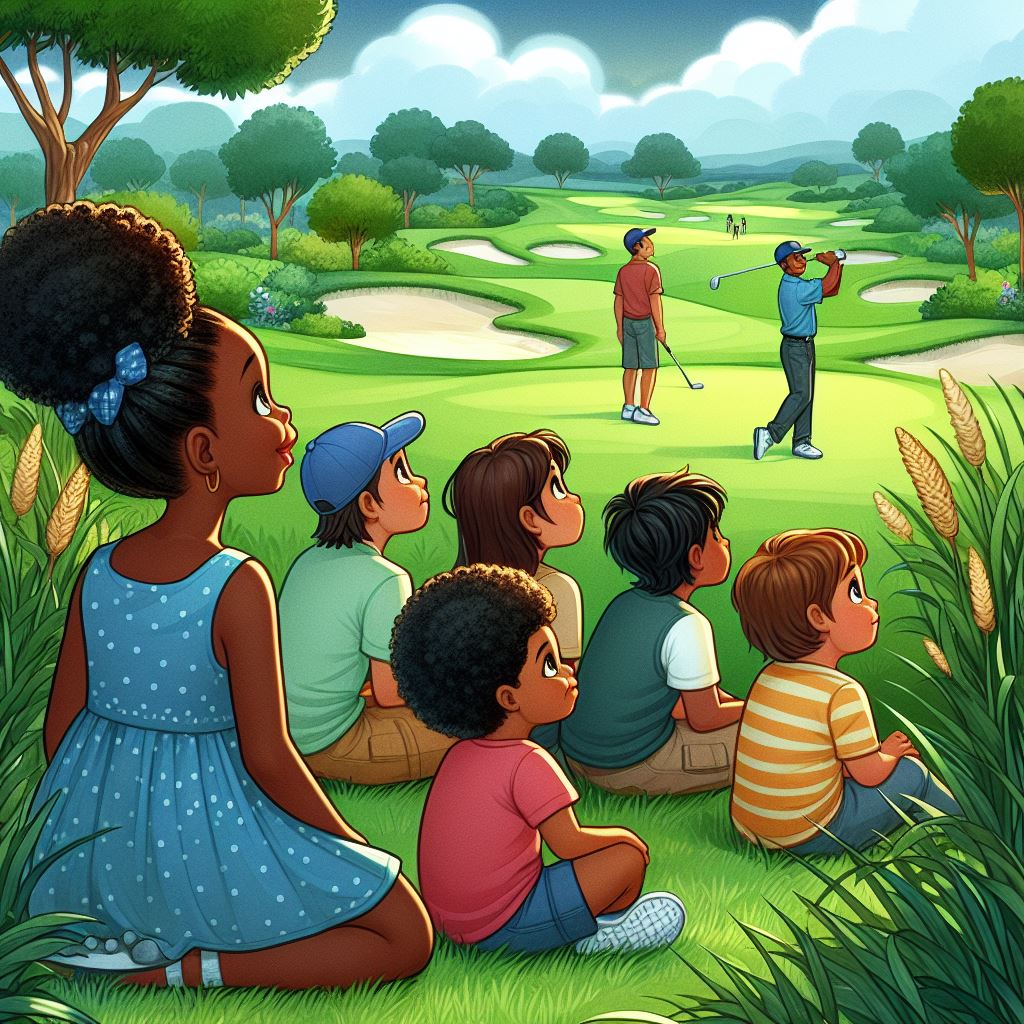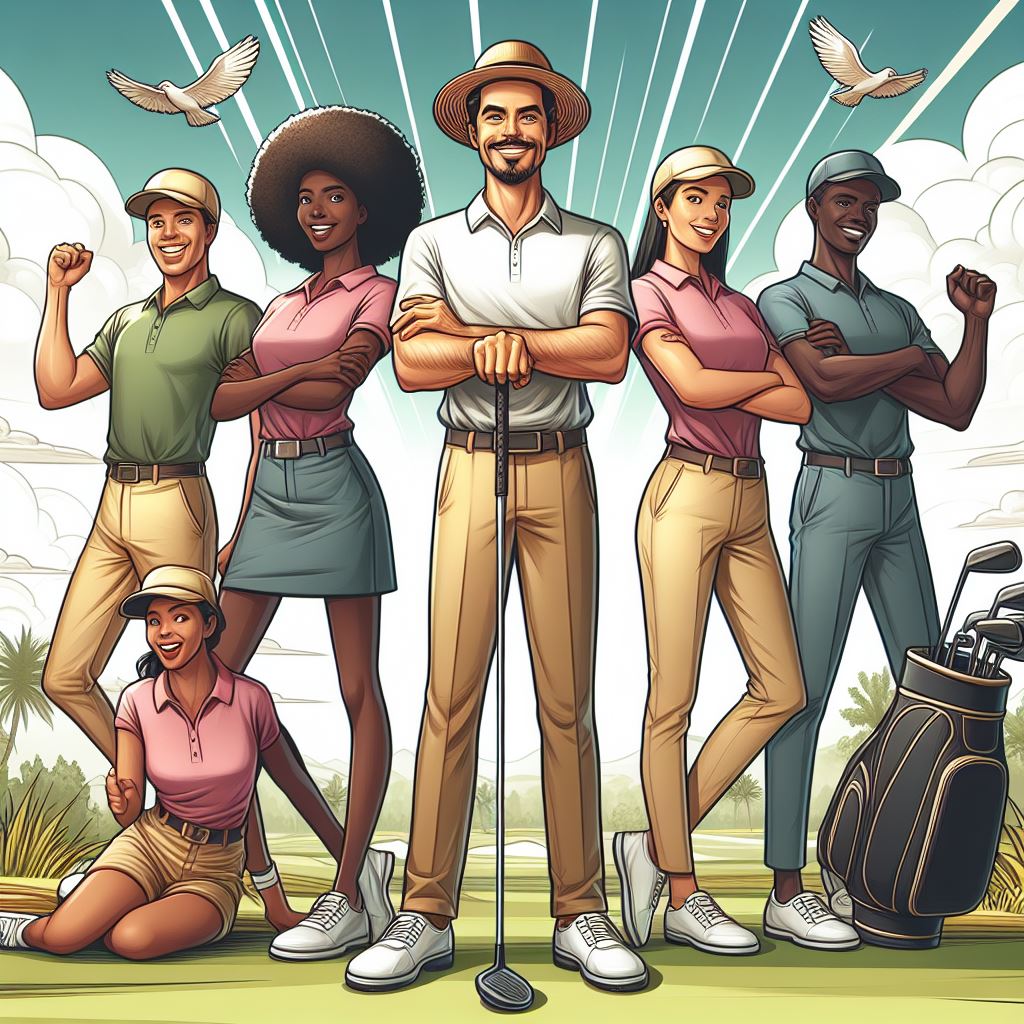Hispanic Women in Golf
When I started playing golf, I didn't realize there weren't many Hispanic women like me in the game.
In the Puerto Rican community, I mostly saw individuals who enjoyed activities, such as dancing, baseball, dominoes, and familial get-togethers. The presence of Hispanic golfers was notably absent from my experience.
.jpg)
After playing golf for more than 13 years and seeing the continued lack of diversity, I wanted to learn more about why. What I found was eye-opening, showing the complex history of race and diversity in golf.
Golf and Its Historical Ties to Exclusivity
Golf has always been linked to wealthy, mostly white communities. Even though the sport has been trying to be more inclusive in recent times, minorities still don't play golf as much for several reasons.
First, it's important to recognize that golf, just like many other sports, has a complicated past when it comes to race and diversity. Although golf is not only played by white people, there is a noticeable shortage of racial diversity in the sport, especially among professional players.
Perceptions and Stereotypes: Golf's Image in the Hispanic Community
When I was younger golf seemed like a game only for rich, mostly white people. In my Hispanic community, nobody talked about golf or seemed interested in it. I thought spending hours watching people swing clubs was a waste of time, and I couldn't understand why others found it fascinating.
But life has a funny way of surprising us. As I grew older, I decided to give golf a try. And you know what? I discovered a whole new passion! I wish I had tried it sooner. It's amazing how something can capture your heart when you least expect it.
When I was growing up, my parents were factory workers who had little time or money for leisure activities like golf. The cost alone would have made it impossible for us to play, not to mention their long work hours. As a kid, both the expense and lack of time meant I couldn't get involved in golf.
Whenever I go to different golf courses, I hardly see any Hispanic or Black golfers. Where's the diversity and inclusivity on the fairways? It's time to bring some lively diversity to this incredible sport.
Reasons why golf is not commonly played by non-whites

Historical Exclusion and Discrimination: Golf has a history of excluding people of color, especially African Americans. Many golf courses were segregated, and clubs had rules that kept people of color out. This exclusion in the past has led to a lack of diversity in the sport today.
The perception of golf as an elitist sport. Golf's history is linked with exclusivity and privilege, which can make minority groups feel unwelcome or left out. This feeling is strengthened by the low number of minority players in professional golf, where few reach the top levels of the game.
Economic Barriers: Golf can be pricey, making it tough for folks with lower incomes to join in. Costs like club fees, gear, and course fees can pile up fast. This means many minority communities, who might have less money, might not be able to play golf.
These expenses can block people from lower-income backgrounds from getting into golf. Plus, private clubs often ask for expensive sign-up fees and yearly payments, making it even tougher for folks to get involved.
Lack of Accessible Facilities: Golf courses are mostly in richer areas, making it tough for folks from less wealthy areas to get to them. This lack of access means fewer chances for people to learn and play golf.
Cultural Barriers: In some areas, golf might not be seen as a popular or important sport. This lack of interest adds to the ongoing lack of diversity in golf. It means that young people might not be encouraged to try golf as a hobby or career.
Different sports are valued in different communities. For instance, basketball and football are often more popular in African-American and Hispanic communities, while golf might not be as important culturally.
Stereotyping: Some non-white people might think golf isn't for them because of stereotypes. Golf has been seen as a sport for rich white men, which can make it hard for people of other races and genders to feel comfortable playing.
Lack of role models or mentors: Minority kids who like golf might get discouraged because they don't see people like them doing well in the sport. When they don't see anyone from their community playing golf and doing great, it's hard for them to imagine themselves succeeding in the sport.
Lately, people are trying to make golf more diverse by creating easier and more inclusive ways to play. But there's still a lot to do to make sure everyone feels welcome and included in golf.
How diversity has impacted the sport of golf
In the past, golf was mainly for wealthy white people, leaving out people of color. But pioneers like Charlie Sifford and Lee Elder changed that by breaking racial barriers. Now, golf is getting more diverse than ever. People from different backgrounds are playing at all levels, which helps us understand and appreciate each other's cultures. This diversity is making golf better for everyone.
Golf programs are also working to include more people. They're giving out equipment, hosting affordable or free lessons, and teaming up with community groups. Successful diverse golfers like Tiger Woods and Lorena Ochoa are inspiring new generations of golfers from all backgrounds. They're making golf more diverse and inclusive.
For Hispanic/Latina golfers
If you're in California, visit latinagolfers.com. Founder Azucena Maldonado says, "I started the Latina Golfers Association to share my love of golf with women, especially Latinas."
They offer golf lessons, etiquette workshops, networking events, outings, fashion shows, and mixers.
In St. Louis, check out hccstl.com/golf-clinic/. The St. Louis Hispanic Chamber of Commerce hosts golf clinics for women to ensure Latinas have equal access to the sport.
In Connecticut, there's the CT Latinas Golf Team at goodwinparkgolfcourse.com/instruction/communidad-glp#.
Overall, diversity is breaking racial barriers, making golf more inclusive, and inspiring future golfers.
For black or African American lady golfers
Take a look at blackgirlsgolf.net. They're based in Atlanta, Georgia, and have over 4,000 members across the US and internationally.
Other resources, such as https://africanamericangolfersdigest.com/ are available, not to mention the United Black Golfers Association.
For apparel and accessories check out https://eastsidegolf.com/
A great book to read is: Charlie Takes His Shot: How Charlie Sifford Broke the Color Barrier in Golf
Embracing the Transformation: Golf for Everyone

So, my friends, golf has evolved from a perceived exclusive activity to a beloved pastime. Together, let's shatter stereotypes and create a golfing world that welcomes and celebrates people from all walks of life. With every swing, we'll paint the fairways with joy and unity.
Let's make golf a game for everyone!
